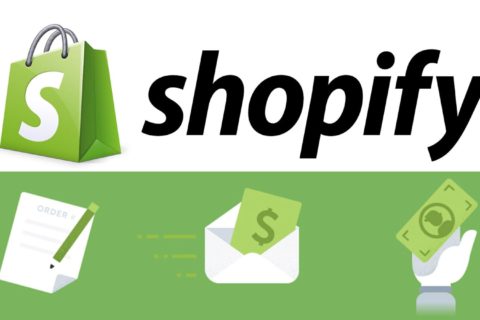Overview
Shopify is now the world’s third-largest eCommerce website. Moreover, shopify has a unique perspective on eCommerce sites that its rivals lack: simplicity. Shopify has a large number of themes to choose from, each with several style variations for more personalization. Using a well-known e-commerce platform like Shopify prevents you from making many of the errors that others have made in the past. Shopify and other e-commerce platforms adhere to a set of design principles that have been proven to be the most successful. You’re already standing on a tried-and-true basis for an e-commerce platform; all you have to do now is change the UX for your specific brand, niche, and consumer.
The overall experience of a person visiting your shop, from start to finish, we refer them to as user experience (UX). The ease with which visitors can navigate your shop, locate what they’re looking for, and make a purchase is how we measure UX . UX design is a method of enhancing a visitor’s satisfaction by improving the usability and functionality of the visitor’s interaction with the website or product. Improving UX has many advantages, but one of the most important is the ability to convert existing traffic into paying customers. You must plan your online store with customers in mind in order to achieve this.
Boosting eCommerce Product Discovery
Custom navigation:
Providing too many choices to a customer can lead to analysis paralysis. We can prioritize items and “collections” that convert the best by creating a custom navigation. To allow for casual A/B checking, these custom navigations can also be edited in the Shopify CMS. Visually, the best-converting Shopify themes make the collection title stand out and use plenty of whitespaces to help users find what they’re looking for among all the items, collections, and pages available.
Collections:
A collection is a grouping of items that are similar in nature. Manually sorting products into collections or automatically sorting products based on matched criteria are both options. Collections may also be temporary, ensuring that Shopify website designs are still current, appropriate, and, most importantly, high-converting.
Product Tags:
Customers may use visible/displayed tags to find related items, and they can also be used internally to build collections. The most significant advantage of tags is that we can use them to construct a faceted search. Customers may use this feature to filter items based on a tagged identifying attribute like “Yellow”. Keep the following Shopify interface suggestions in mind:
- Display which filters are being use for adding clarity.
- Allow customers to delete filters from their search to expand their options.
- Reduce filters to display only the most common.
Search:
Customers who know exactly what they want will benefit from search functionality and is particularly important for mobile shoppers who find browsing and filtering time-consuming. When designing search experiences, keep these Shopify best practices in mind:
- Never cover the search box; instead, make it instantly visible to minimize friction.
- Place the search where people expect to find it (i.e., top right or centralized).
- Not only the search button but the entire input box should be visible.
- Using autocomplete to help users find what they’re looking for more quickly.
- Use suggested findings and autocorrect to account for human error.
- If no sale is made, save user searches and submit follow-up emails.
Shopify Best Practices for Products Pages
Use Captivating Product Images: Imagery that captivates users emotionally is what makes a successful eCommerce website. To that end, Shopify allows you to upload various photos and product variations. Nonetheless, at least one of these product photos should be shown in scale as a Shopify best practices to set standards. Customers want to investigate a product thoroughly before purchasing it, making sure that all product images are colorful, high-quality, and zoomable.
Display Clear Product Information:
Due to a lack of knowledge about the actual cost, a staggering number of eCommerce customers abandon their shopping carts. Unexpected costs account for 60% of cart abandonment, and 23% of consumers are unable to estimate the overall cost ahead of time. Lack of transparency on eCommerce websites is a surefire way to destroy conversions, so keep these Shopify tips and tricks in mind:
- To organize details clearly, use progressive transparency techniques.
- Present a complete cost analysis upfront.
- Clearly communicate the value proposition.
- Make the buy now/add to cart button stand out in the design.
Build Trust and Reassurance:
Customers abandon shopping carts in 19 percent of cases due to a lack of confidence. On eCommerce websites, social proof is an undeniable way to boost conversions by instilling confidence. Thankfully, all Shopify stores come with SSL (secure checkout) by default, and customers can even leave feedback as social evidence. Since people trust online reviews just as much as they make personal recommendations, it’s critical to encourage former customers to leave reviews and indicate this during the customer journey. The majority of Shopify themes often use Schema markup to incorporate these scores into search results.
Show Related Product Recommendations:
Cross-sell and upsell tactics are used by all successful eCommerce companies. Tags, when paired with analytics and A/B testing integrations like Optimizely’s Web Recommendations, will help you make better decisions. This will assist designers in empowering companies to increase conversion rates by showing alternative or additional products that consumers may be interested in.
Integrate Shopping Experience Personalization:
Web Personalizations by Optimizely, together with Shopify collections and tags, are examples of such integrations. This allows data-driven companies to classify audiences based on their preferences and prior purchasing history and then adjust the page content accordingly. Shopify stores may use anticipatory design strategies to view more appropriate content, keeping customers engaged for longer. As a result, they’re more likely to translate into a sale. Personalization is essential for any eCommerce company’s financial success.
Checkout optimization:
Guest Checkout vs. Customer Accounts: Customers abandon their checkout without buying something because the platform wants us to create an account. Shopify recommends allowing guest checkout, so having customer accounts disabled is the default setting.
Pinpointing UX Flaws and Reducing Drop-offs: It’s like trying to find a black cat in dark light if you try to solve abandoned checkouts without strong analytics. When it comes to improving user interactions and checkout flows, data-driven processes perform best. Shopify designers will link Google Analytics to Shopify and create a target funnel. This will show precisely where customers decide not to complete their purchase after enough data has been collected. Integrate Shopify with resources like Crazy Egg, Hotjar, and FullStory for the best performance. This is to use heatmaps and visitor recordings to examine these problem areas in greater detail.
Bottom Line
If you follow all these tips, you can avoid mistakes in the UI of your Shopify site. If you find this blog interesting, then please do check our rest blogs too. Though best practices are excellent, they can only get you so far. Every eCommerce site is unique, which means each eCommerce site has its own set of UX issues. How do you identify the issues on your site? You want to concentrate as much on your research as possible. Tools will assist you in identifying issues, but they will not assist you in resolving them. That is entirely up to you! Fortunately, you’re already on your way to resolving your eCommerce UX issues.
We at Web Mavens are always available to solve all your UI and UX problems. We are Web Developers bringing Web Solutions to your business. You can contact us if you face any problems or any queries on Shopify. We are here to help you out! To know more about us, check out our services and technologies.




